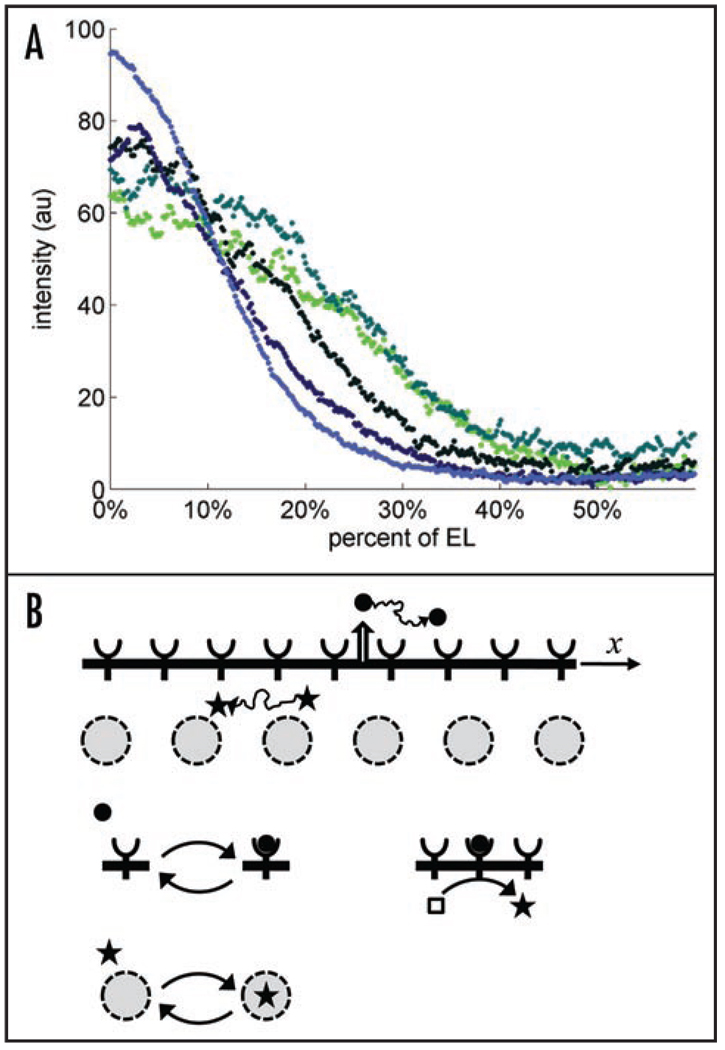Figure 4.
(A) Dynamics of the wild-type the MAPK phosphorylation gradient: over the time course of the five last nuclear divisions, the level of MAPK phosphorylation is amplified at both poles and attenuated in the rest of the embryo; reproduced from Coppey et al. Current Biology 2008; 18:915–9. These dynamics are consistent with a model based on a cascade of diffusion-trapping modules. (B) A diffusible ligand (solid circle) is reversibly bound by cell surface receptors. A diffusible intracellular molecule (star) shuttles in and out of the nuclei. Transitions between mobile and immobile states for a particle in the extracellular stage of the cascade. Immobile particles in the first stage initiate the production of mobile particles in the second stage. In this case, a ligand-receptor complex is an enzyme acting on a pool of inactive intracellular molecules (an empty square). A mobile intracellular molecule is reversibly trapped by immobile traps. In this case, the traps are nuclei distributed in a shared cytoplasm of the early embryo.

